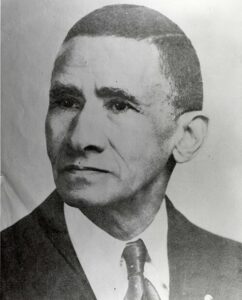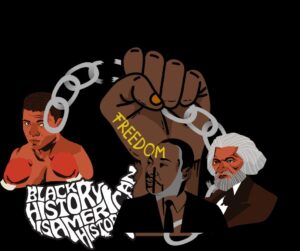Once upon a time in Black Entrepreneur History was an African American man who was born into the institution of slavery named Lewis Hayden who became the owner of the second largest black-owned merchant business in Boston, a lecturer and determined abolitionist on the Underground Railroad.
Born in Lexington, Kentucky on December 2, 1811 to enslaved parents Lewis and Millie[1] who were enslaved by Colonel Warren, he grew up laboring as a manufacturer of bagging and bale rope. There he met and married and bore two sons with is wife who lived on that plantation owned by one of the founders of the Fugitive Slave Act, Henry Clay, (that would later be passed in 1850 when Hayden was living free in Boston).
One of Lewis’s sons passed away shortly after birth, while the other survived, but he wasn’t able to live with them on Clay’s plantation. One day, the heartless slave owner decided he would sell Lewis’s wife and only living son. It was then that Lewis begged Clay not to do so, but he refused to listen and sold off his only child and wife anyway. He didn’t even know where they’d been sold, and he never saw them again.
It was later in his Lewis’ life that he wrote how he felt about the situation and how it broke him down. He shared that it was pleasant to think of his deceased son in the grave because he know exactly where he was, but the one son who is alive and he doesn’t know where he is, he couldn’t bear to think about.
Lewis had grown up living in the depths of pain and loss, having witnessed his siblings being sold away, watched his fellow black people being tortured and killed for nothing at all except what was said to be disobedience, according to the slave owners, so to have his own family snatched from him in the blink of an eye set something in his mind. He wouldn’t let it happen again.
These things together made him realize that the only way out of slavery was through death and escape. He would later do the latter after he remarried a woman named Harriet Bell and acquired a step son named Joseph whom he loved as his own.
Lewis Hayden Learned How To Escape Through Reading
Since he was laboring in the Phoenix House, he would secretly learn to read over time, first mastering the alphabet by using the Bible. After mastering reading, he secretly took newspapers and other articles, and this was how he learned about how he could potentially gain freedom in the North.
There were many visitors at the hotel where he labored, so when he felt it was safe, he carefully chose visitors from the North who would tell him about the place. It was then he met a northerner in the business of leather named Milton Gale, and the man wondered why an intelligent man like Lewis didn’t escape the slavery of the South and head to Boston. Lewis explained he didn’t know the route or how to make it there. That was all it took for Gale to give Lewis all the directions and answers.
Lewis Hayden’s Escape, Business and Activism
With his wife and stepson, Lewis fled slavery via the Underground Railroad, the network of secret people and locations to hide and travel, until they reached the country of Canada. They remained there for a while until they moved to Detroit and then to Boston, Massachusetts, which was the city with a large underground network of powerful abolitionists that were part of the Underground Railroad.
Upon settling, Lewis Hayden attended a free night school on Belknap Street and felt it his responsibility to join the Underground Railroad as an abolitionist. Soon, he became one of the major directors of the Underground Railroad while running his own clothing business on 151 Cambridge Street, that had already been set up, with partner Jonas Clark in 1849 becoming a clothier. Here was where many abolitionist meetings took place and where the news came of the passing of the Fugitive Slave Act of 1850.
He used his new home on Beacon Hill at 66 Phillips (Southac) Street to hide hundreds of black men, women and children who escaped slavery. In order to protect any and everyone being hidden in his home, along with his family, he had armed guards standing watch from inside. One highly publicized incident after the passing of the Fugitive Slave Law had to do with a black couple, named William and Mary Crafts, being chased town by town by slave catchers who ended up taking refuge in Lewis Hayden’s guarded home. The slave catchers and the US Marshall feared and left, and the Crafts were able to escape. The abolitionists made it a dangerous job for US Marshalls to capture runaways.
Another incident had to do with an Black man named Shadrach who escaped slavery and was working in Boston as a waiter at the Cornhill Coffee House. The US Marshalls and slave catchers kidnapped Shadrach and at the Coffee House and took him down the road to the court house in order to return him to slavery. However, once there, a group of armed Black men entered and carried Shadrach out to cheers from the crowd outside who were anti-slavery. Lewis led the way for Shadrach’s escape via the Underground Railroad thereafter.
Hayden had been arrested a couple of times in his proud efforts of freeing those who had a right to be free. It was in 1857-1858 that his merchant business hit a low point and he had to downsize from what was the second largest black-owned clothing store at that time, to a smaller location at another location on Cambridge Street. Soon that business had to close and he became a jewelry salesman and lecturer.
He founded and recruited the 1st Black fighting Army regimen from multiple states and Canada, for the 55 Infantry and 5th Calvary, Massachusetts volunteers, in order to capture Harper’s Ferry during the Civil War. It was after this that he was elected to the Massachusetts state legislature as Messenger for Secretary of State in 1873. While there, he was responsible for the creation and passage of the motion to erect a Crispus Attucks which was erected in 1888 where other legislators failed because he was able to unite the interests of other classes of other fallen heroes also being erected.
Crispus Attucks was the 1st man killed, a black man, in the Boston Massacre.
Other Lewis Hayden’s Accomplishments
- Freemason
- Honorary Member of the Fraternal Association and Crispus Attucks Lodge
- Member of Free Soil and Free Democracy Parties
- Founding Member of the Boston Vigilance Committee
Death
On April 7, 1889, Lewis Hayden, whose home was known to many as the Citadel of Liberty, passed away of Cystitis [1] at the age of 78 (some records states 74 due to a guessed birth date). His funeral was held on Thursday, April 11th at 11 oclock at the Charles AME Church. Before that, his body lay at rest for hundreds of visitors to view at his home on the first floor. (This was customary for those who passed away to have the viewings for family and public inside the home). The funeral was filled with grieving people whose lives he had touched over the years.
His newspaper obituary of The Boston Daily Globe of 1889 read:
“Born a Slave, Died a Free Man. Hero of Stirring Times on the Underground Railway. Leader of His Race in the Struggle for Liberty.”
He had provided a home to those who didn’t have a home and a pathway to freedom for those who didn’t know one. He left his wife Harriet behind, but his stepson had died years earlier.
He was buried in Woodlawn Cemetery in Everett, Massachusetts.
Sources
New Bedford Historical Society
[1]Town and City Clerks of Massachusetts. Massachusetts Vital and Town Records. Provo, UT: Holbrook Research Institute (Jay and Delene Holbrook).
The Boston Globe (Boston, Massachusetts)· Mon, Apr 8, 1889 · Page 5
By Unknown author – The Liberator (1831-1865) newspaper (http://www.theliberatorfiles.com/liberator-photo-gallery/), Public Domain, https://commons.wikimedia.org/w/index.php?curid=25865537





More Related Stories
Isaac Scott Hathaway – Founder of Isaac Hathaway Art Company & Designer of First African American Coin
James Wormley – Founder of the Most Expensive Hotel in Washington D.C. in 1800s – the Wormley Hotel
William E. Matthews – Wealthy Financial Broker & Civil Rights Leader of 1800s